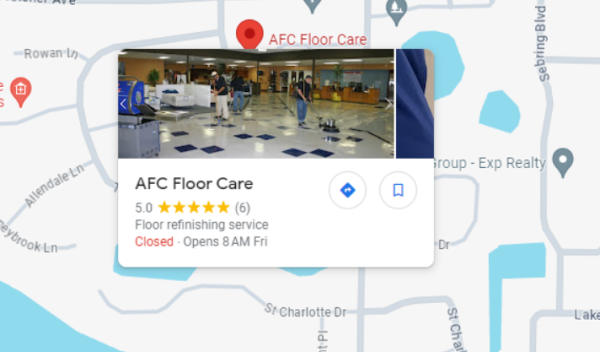Travertine, a sedimentary rock formed by the precipitation of calcium carbonate, is renowned for its distinctive appearance, durability, and versatility. Used for centuries in architectural marvels and interior design, travertine lends an air of timeless elegance to any space. However, like any natural stone, travertine requires regular maintenance to preserve its luster and beauty. Among the crucial maintenance practices is polishing, a meticulous process that enhances the stone’s aesthetics and prolongs its lifespan. In this comprehensive guide, we delve into the art and science of travertine polishing, exploring its techniques, benefits, and the transformative impact it has on this exquisite natural material.
Understanding Travertine
Before delving into the intricacies of travertine polishing, it’s essential to understand the unique characteristics of this remarkable stone. Travertine forms from mineral deposits in groundwater, typically near hot springs or limestone caves. Over time, these deposits accumulate, creating distinct layers of sedimentary rock. The result is a material characterized by its porous nature, subtle color variations, and distinctive veining.
One of the defining features of travertine is its natural pits and voids, which contribute to its rustic charm. These surface imperfections, while adding character, also make travertine susceptible to staining and damage from everyday wear and tear. Thus, regular maintenance, including cleaning and polishing, is essential to preserve its aesthetic appeal and structural integrity.

The Polishing Process
Travertine polishing is a multi-step process that involves grinding, honing, and buffing the stone’s surface to achieve a smooth, glossy finish. Each stage of the process is carefully executed to address specific imperfections and enhance the stone’s natural beauty.
Grinding: The first step in travertine polishing involves the use of coarse diamond abrasives to grind away surface imperfections, scratches, and stains. This process effectively levels the stone’s surface, preparing it for further refinement.
Honing: Following grinding, the travertine undergoes honing, a process that involves progressively finer abrasives to smooth out the surface and remove any remaining scratches. Honing enhances the stone’s clarity and depth of color, imparting a soft, matte finish.
Polishing: The final stage of the polishing process involves buffing the travertine surface to a high shine. This is achieved using polishing powders or compounds applied with specialized equipment, such as polishing machines or hand-held polishers. The friction generated by the polishing pads creates a glossy sheen, accentuating the stone’s natural veining and texture.
Benefits of Travertine Polishing
The benefits of travertine polishing extend beyond aesthetic enhancement, encompassing both practical and functional advantages.
Restored Beauty: Polishing rejuvenates the appearance of travertine, bringing out its natural colors and patterns. By eliminating surface imperfections and dullness, polishing enhances the stone’s visual appeal, making it the focal point of any space.
Increased Durability: Polished travertine is more resistant to scratching, staining, and etching than untreated surfaces. The smooth, glossy finish creates a protective barrier that helps shield the stone from damage, extending its lifespan and maintaining its integrity.
Ease of Maintenance: Polished travertine is easier to clean and maintain than unpolished surfaces. The smooth, non-porous finish repels dirt, grime, and moisture, reducing the risk of staining and bacterial growth. Regular cleaning with mild, pH-neutral cleansers is all that’s needed to keep polished travertine looking pristine.

Enhanced Slip Resistance: Contrary to popular belief, polished travertine can be slip-resistant when properly treated. Specialized sealants can be applied after polishing to improve traction and safety, making polished travertine suitable for both indoor and outdoor use.
Versatility: Polished travertine complements a wide range of design styles, from traditional to contemporary. Its timeless elegance and understated beauty make it a popular choice for flooring, countertops, backsplashes, and accent walls in residential and commercial settings alike.
Best Practices for Travertine Polishing
To achieve optimal results when polishing travertine, it’s essential to adhere to best practices and use quality products and equipment. Here are some tips to ensure a successful polishing project:
Surface Preparation: Thoroughly clean the travertine surface before polishing to remove dirt, grime, and any existing sealants. Repair any cracks, chips, or damage to the stone prior to polishing.
Test in a Small Area: Before proceeding with full-scale polishing, test the selected products and techniques in a small, inconspicuous area to ensure compatibility and desired results.
Use the Right Tools: Invest in high-quality polishing pads, abrasives, and equipment designed specifically for natural stone surfaces. Avoid using abrasive cleaners or acidic substances that can damage the stone.
Follow Manufacturer Instructions: Read and follow the manufacturer’s instructions for all polishing products and equipment. Improper use or application can result in subpar results or damage to the travertine.
Seal the Surface: Once polishing is complete, apply a high-quality sealer to protect the travertine from moisture, stains, and other contaminants. Reapply the sealer periodically as needed to maintain optimal protection.
Conclusion
At AFC Floor Care, we prioritize not only superior results but also environmental responsibility. Our eco-friendly practices ensure that your travertine surfaces are restored to their former glory in a manner that is both sustainable and responsible.
Experience the AFC difference and unlock the full potential of your travertine surfaces. Trust us to elevate your space with our expertise in travertine polishing. Contact AFC Floor Care today and embark on a journey towards timeless elegance and sophistication.

Media Contact
Company Name: AFC Floor Care
Contact Person: Media Relations
Email: Send Email
Phone: 813-933-6049
Address:13106 Tifton Dr
City: Tampa
State: Florida
Country: United States
Website: https://www.afcfloorcare.com/
